Kumano Kodo – A 1000-Year-Old Trail, part 2
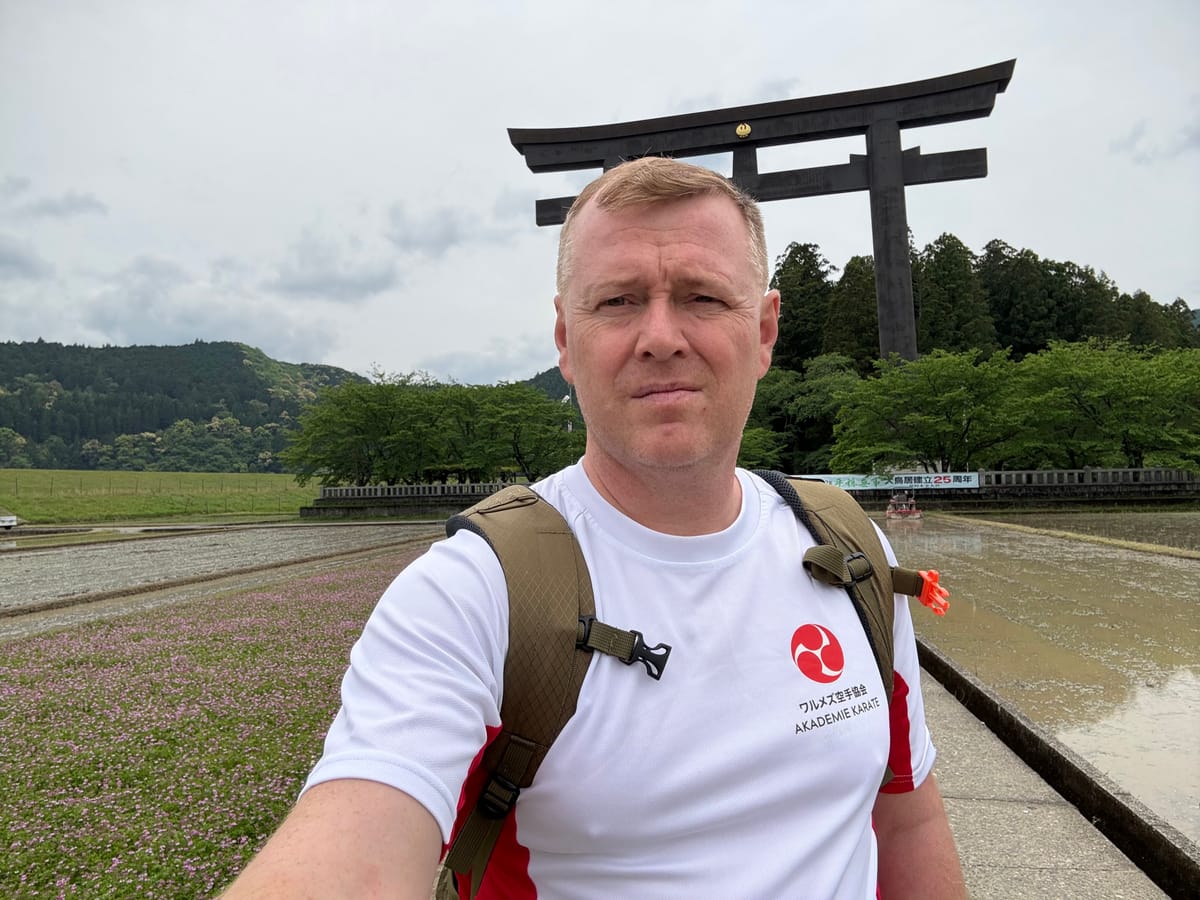
Thursday morning, the first day of May, and Japan is in the midst of Golden Week—one of the country’s biggest holiday seasons when many Japanese take time off to travel. I expected crowds everywhere, but to my surprise, the opposite was true. The kind lady who hosted me in the small village where I stayed helped me adjust my plans, as some of the routes turned out to be quite long. With Friday’s weather forecast looking rough, I decided to mix hiking with using local transportation.
Buses in Japan work a bit differently than in Europe. You board from the back and exit at the front, where you pay the driver. If you want to get off, you press a button in advance to alert the driver—just make sure you press it early enough so you don’t traumatize him when he suddenly slams the brakes to stop for you 😊.
For traveling around the Kansai region, I highly recommend getting an ICOCA card. You can load it straight onto your phone if you have mobile payments set up. The card works seamlessly with metro, trains, and buses and can be purchased at most major train stations or metro stops in Osaka.
That morning, I set out to visit Hongu and the massive Ōtorii gate I once saw in a Netflix documentary. It's Japan’s largest torii gate, built in 2000 as a symbol of peace and spiritual power. It marks the original site of Kumano Hongū Taisha, where the shrine stood for over a thousand years before a devastating flood in 1889 forced it to be relocated to higher ground. Torii gates are common in Japan, symbolizing the boundary between the physical and spiritual worlds. This one, in particular, is often called the “Gate to Spiritual Rebirth.”
Thanks to Tripadvisor, I discovered a tiny hidden café called Choux, known for its amazing cream-filled donuts. When I say amazing, I mean oishī desu!
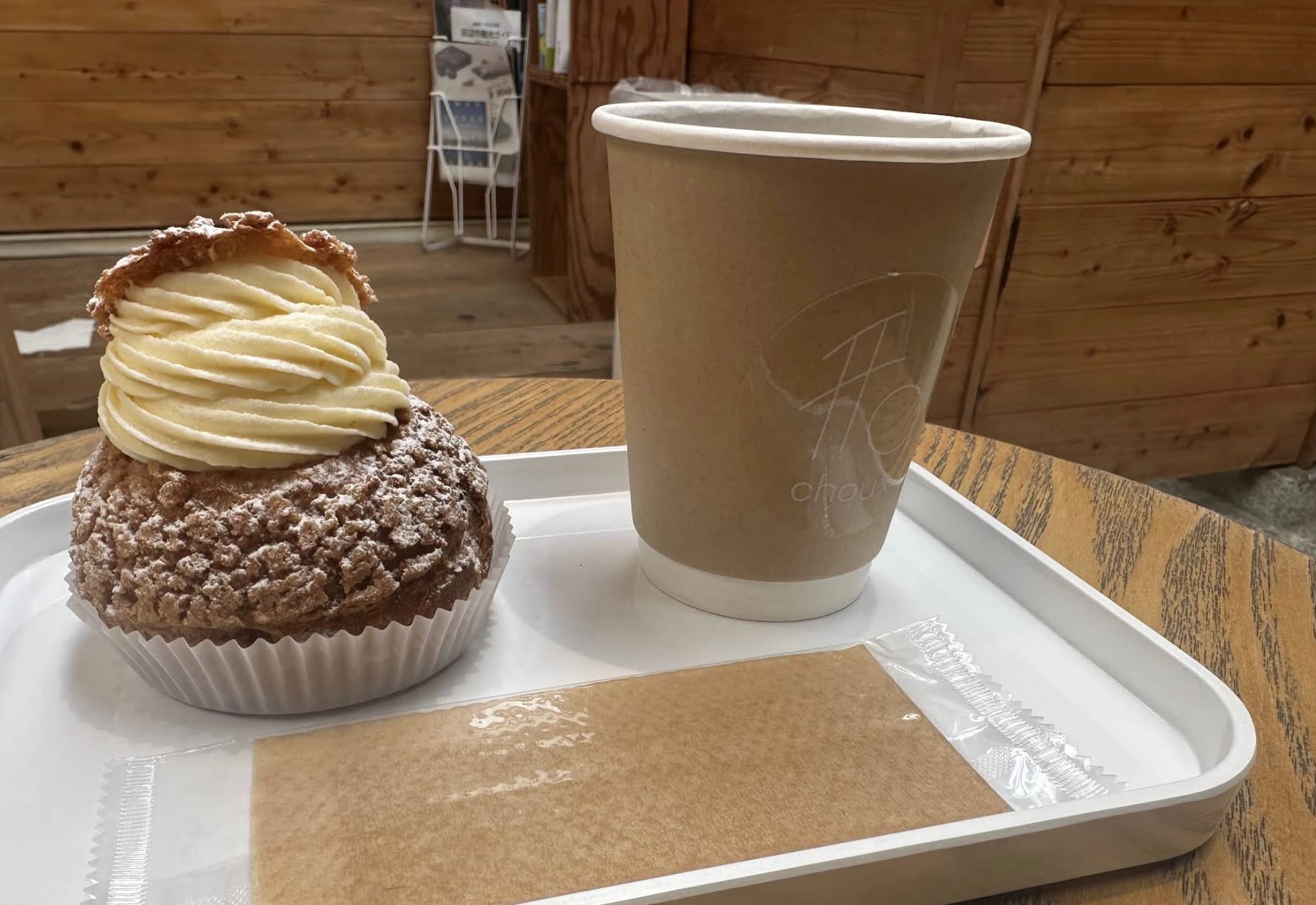
With my morning off to such a sweet start, I headed toward the torii gate. May in Japan is full of blooming flowers, and the fields around the gate were absolutely stunning. No crowds—just a few tourists and some locals. It made me wonder: where are all the Japanese people spending Golden Week if not here? This place was simply magical. Rice fields reflected the giant gate in their waters. I soaked it all in before walking over to a nearby river.

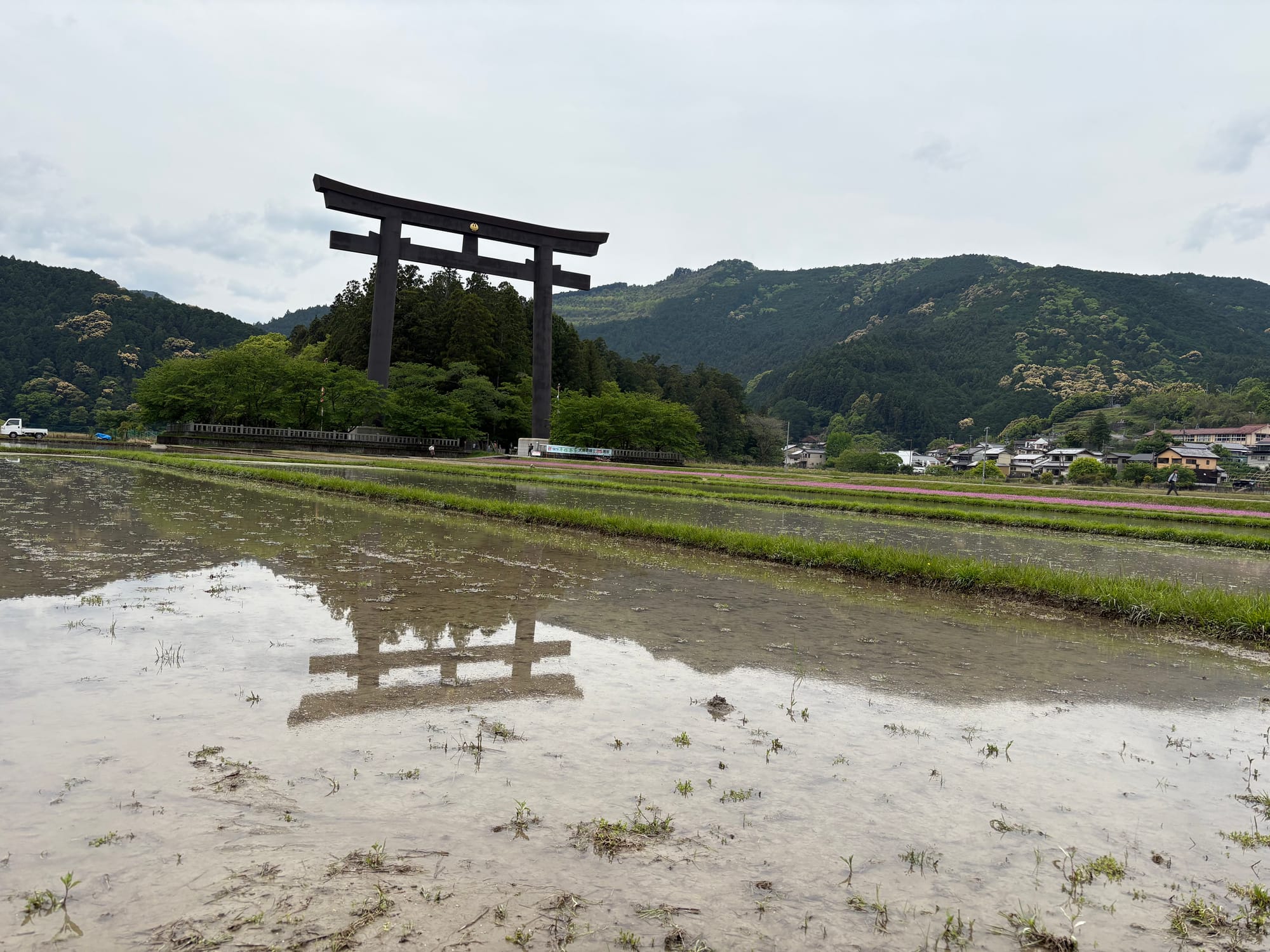
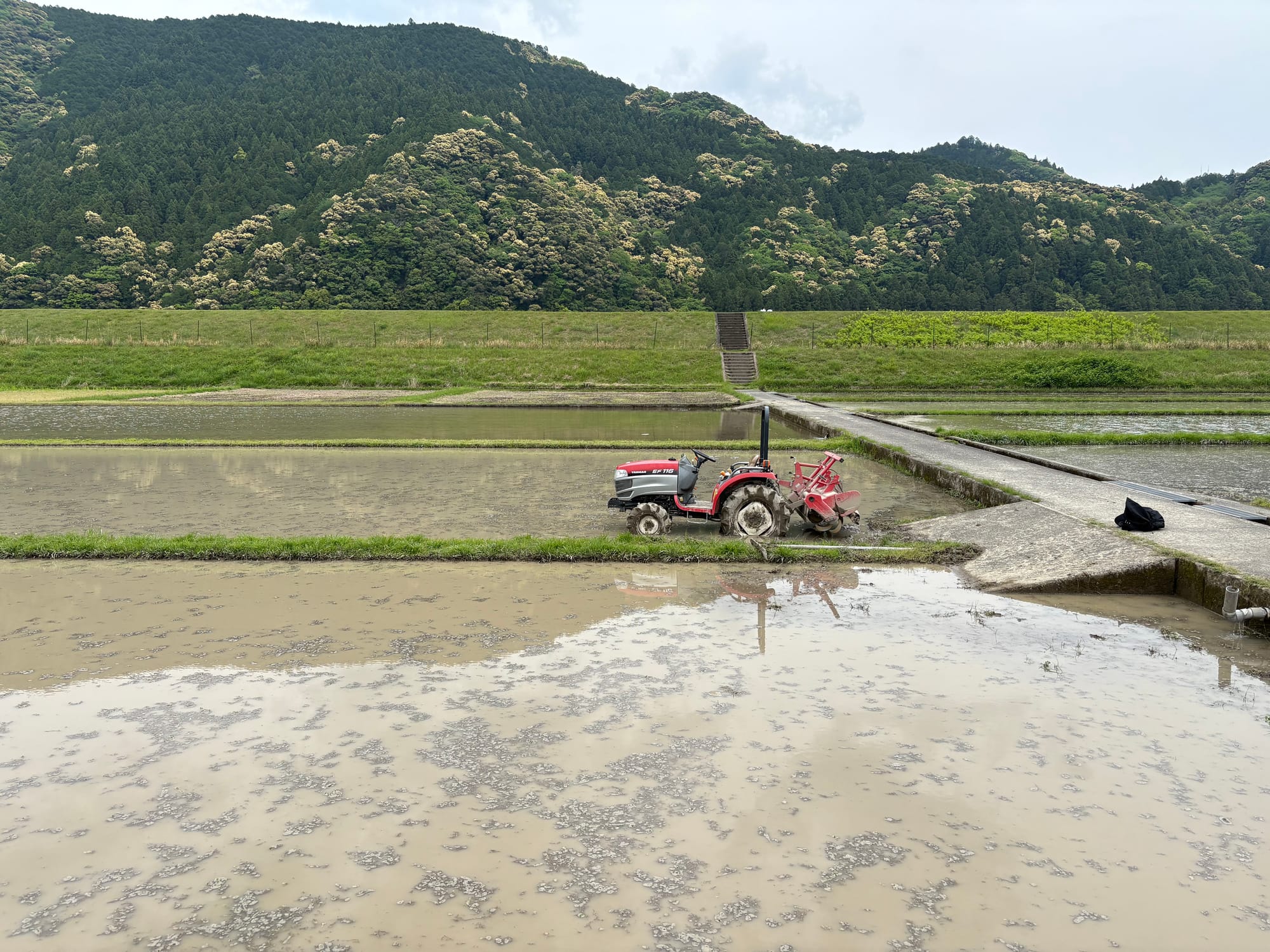
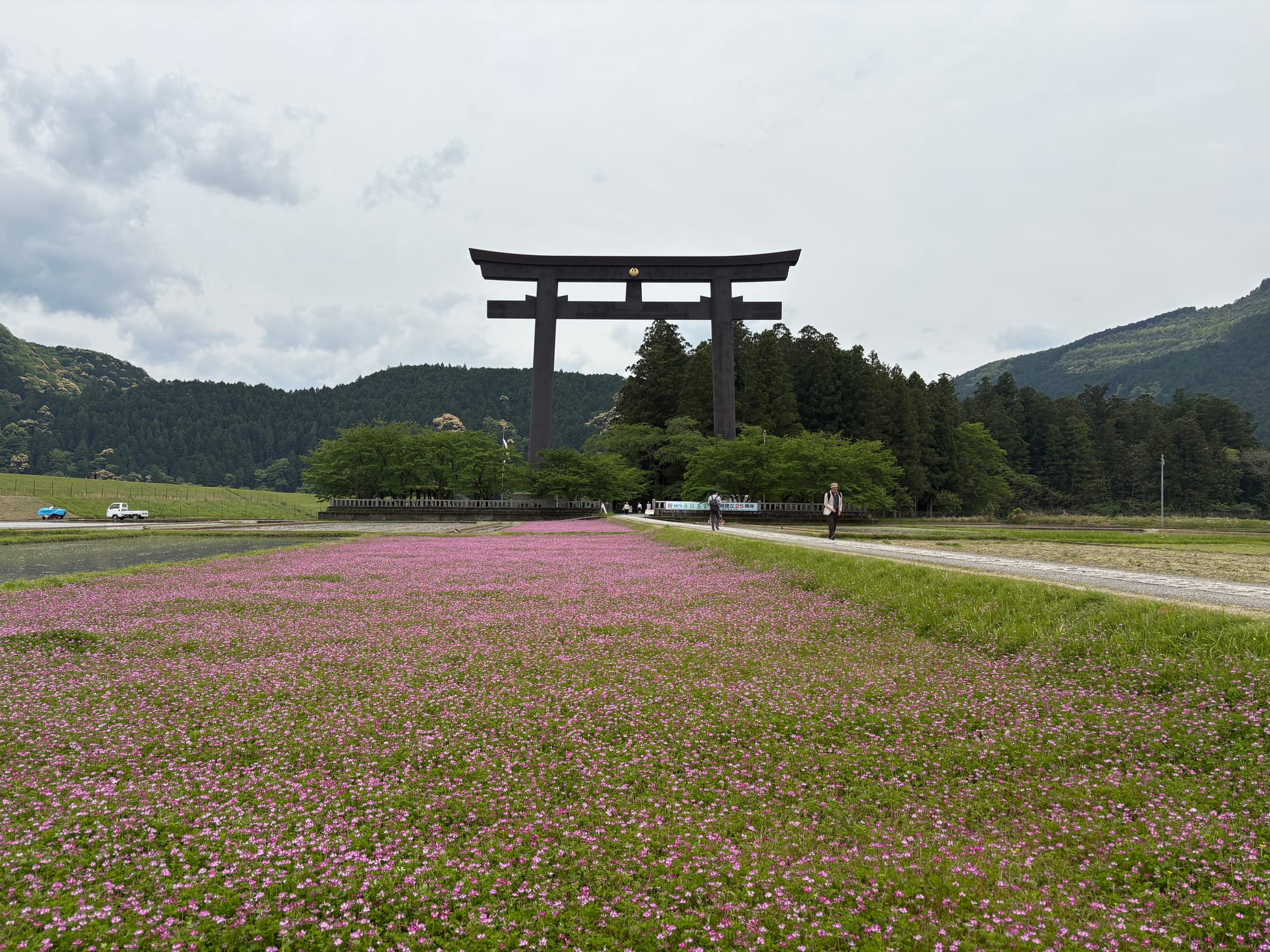
My good friend Giedrius sensei from Lithuania, who loves traveling in his caravan, would have loved this spot. The riverbed, partly dried up, was cleverly used as parking for vans and campers when water levels are low. It was May, which back home is typically a time when rivers are full, so it surprised me to see how dry it was. One lone camper was enjoying the peacefulness of the place—I snapped a picture and sent it to Giedrius as a virtual postcard, suggesting where his next adventure could be 😊.
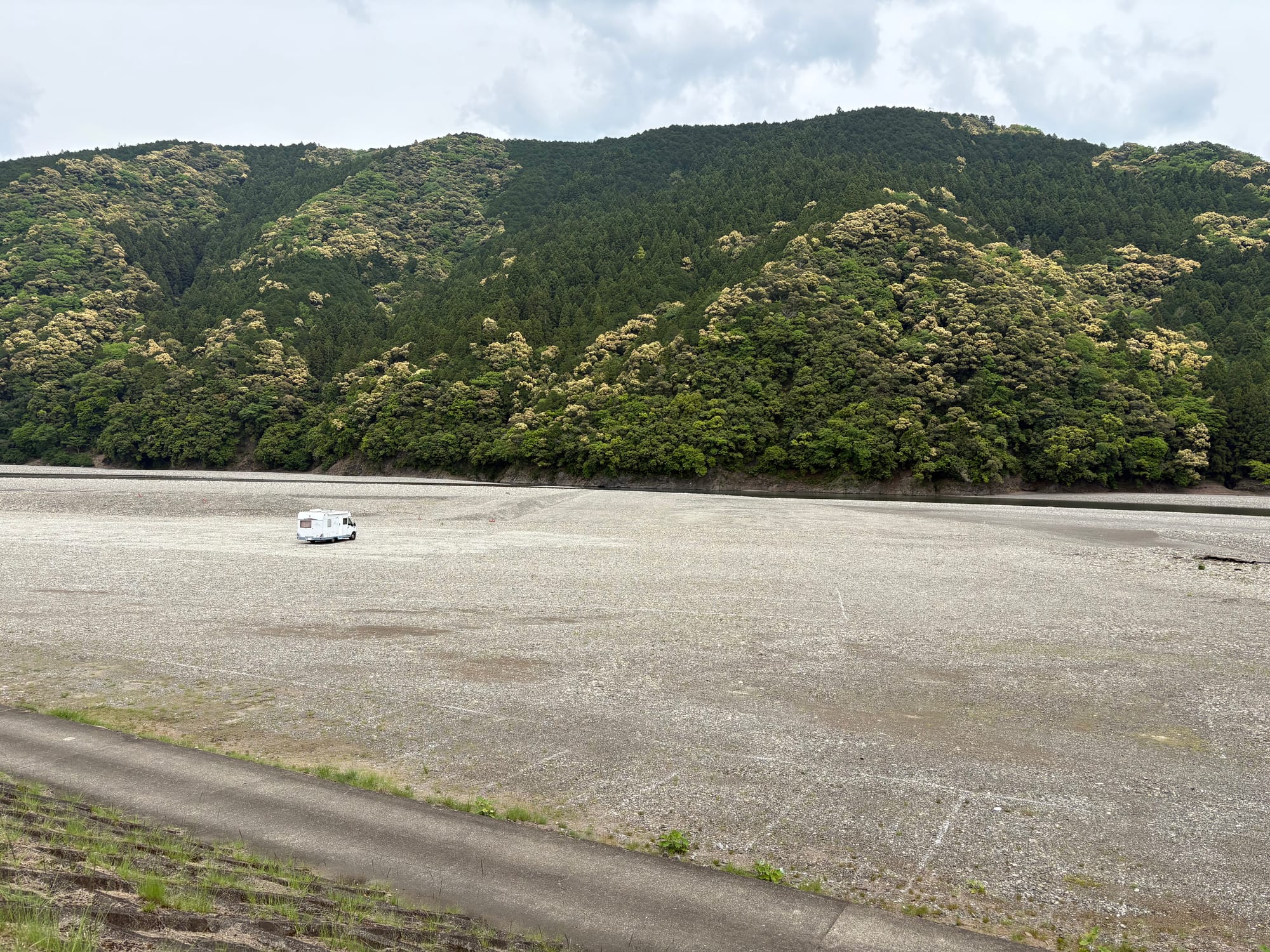
Not far from the torii gate in Hongu-cho Hongu stands the Hongū Taisha shrine. Interestingly, it uses the same mitsudomoe symbol as our dojo in the Czech Republic. This ancient kamon has many meanings and is often associated with the deity Hachiman, protector of the samurai class and especially revered by the Minamoto clan. Kumano Hongū Taisha is a serene spiritual sanctuary where people come to pay respects to the Shinto gods.
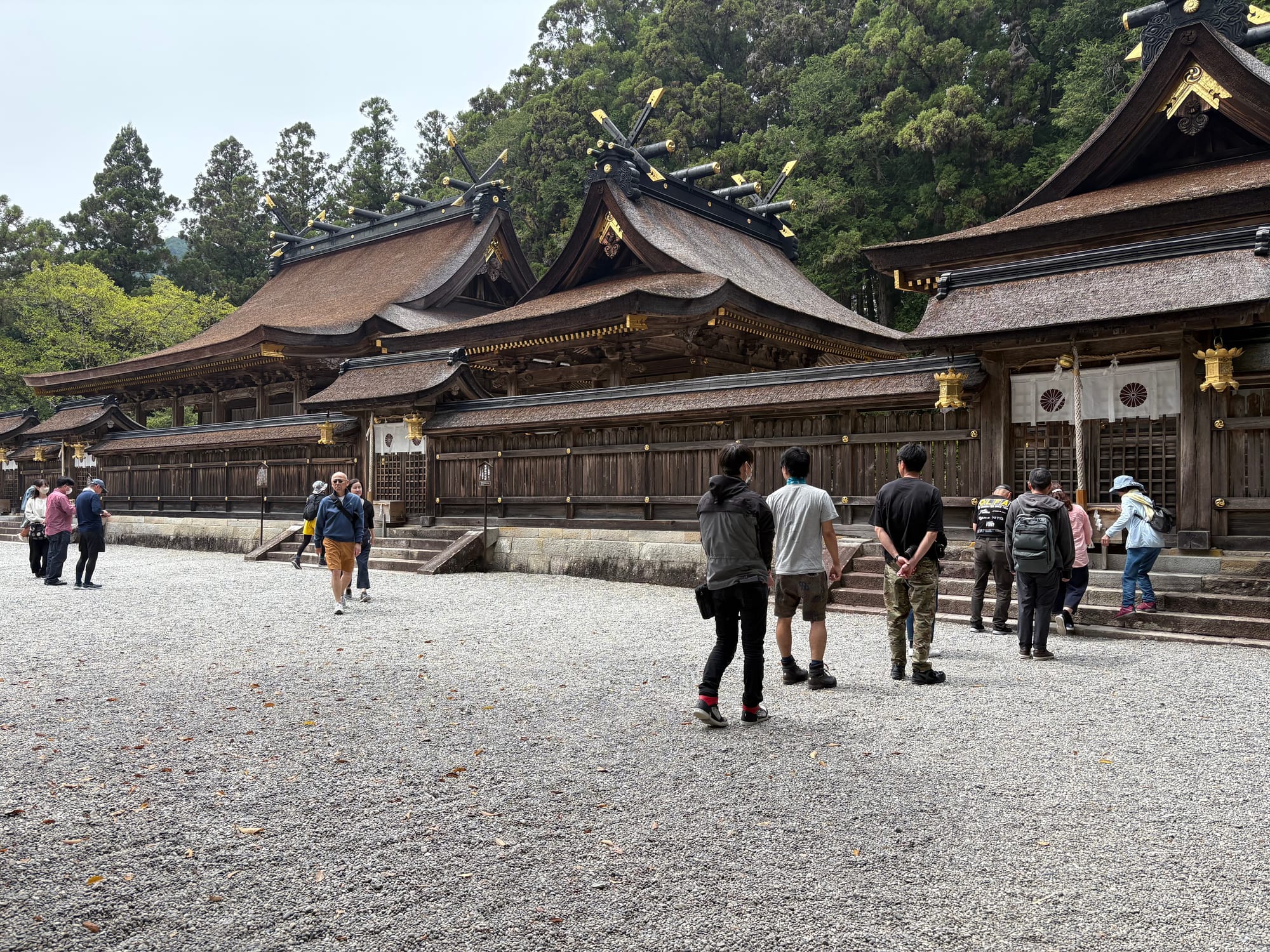
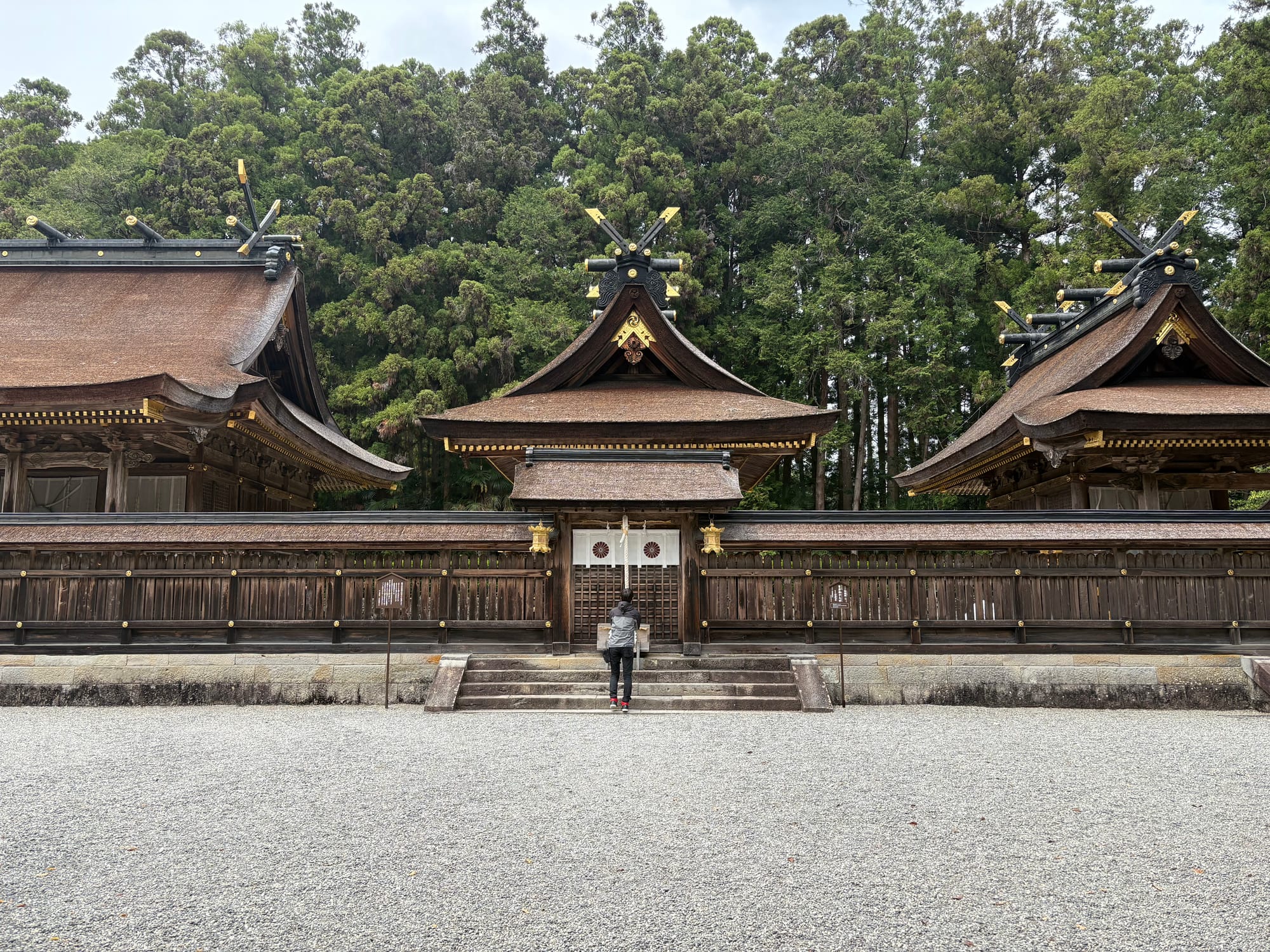

After a light snack at a nearby café, I continued on to Kii-Katsuura to catch a connection to sacred Mount Nachisan—home to one of Japan’s most iconic and photographed spiritual sites, Kumano Nachi Taisha, as well as the tallest waterfall in Japan, Nachi no Taki. The place looked like something straight out of a dream: towering green mountains, a vivid red pagoda, and hardly any people around. I arrived on the last bus of the day, just as the skies were threatening rain, so most visitors had already left. That added to the tranquility of the scene.
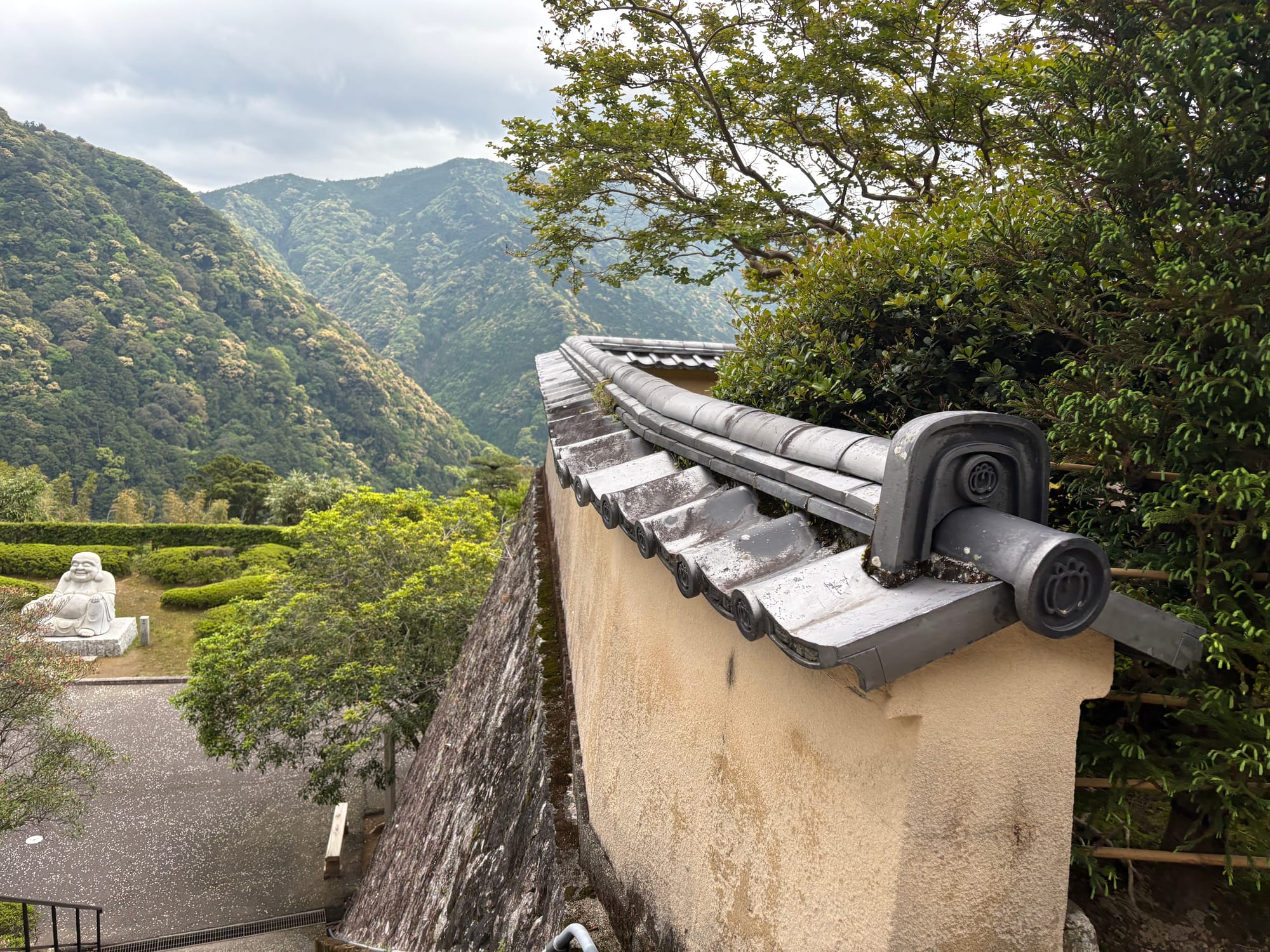
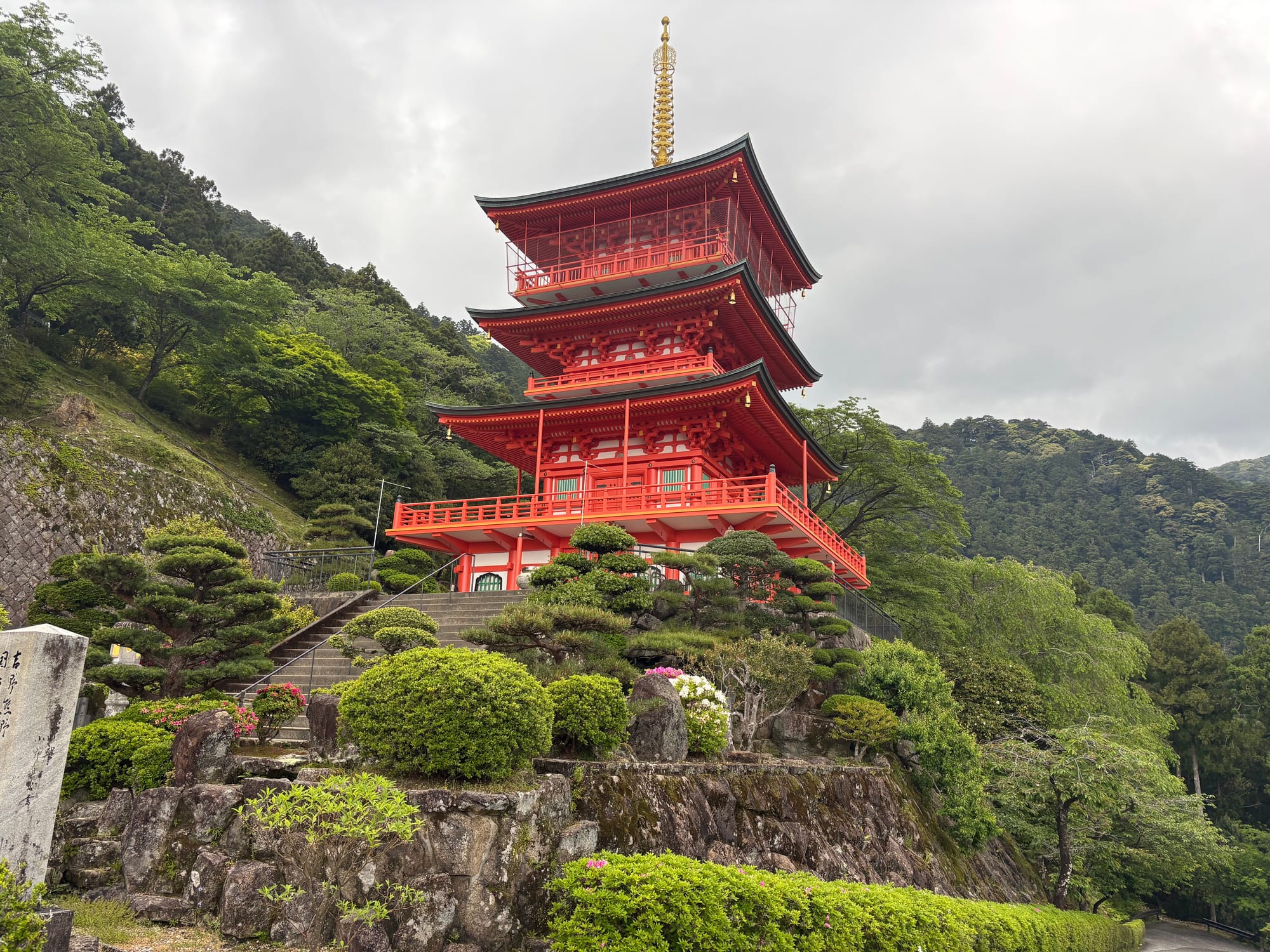
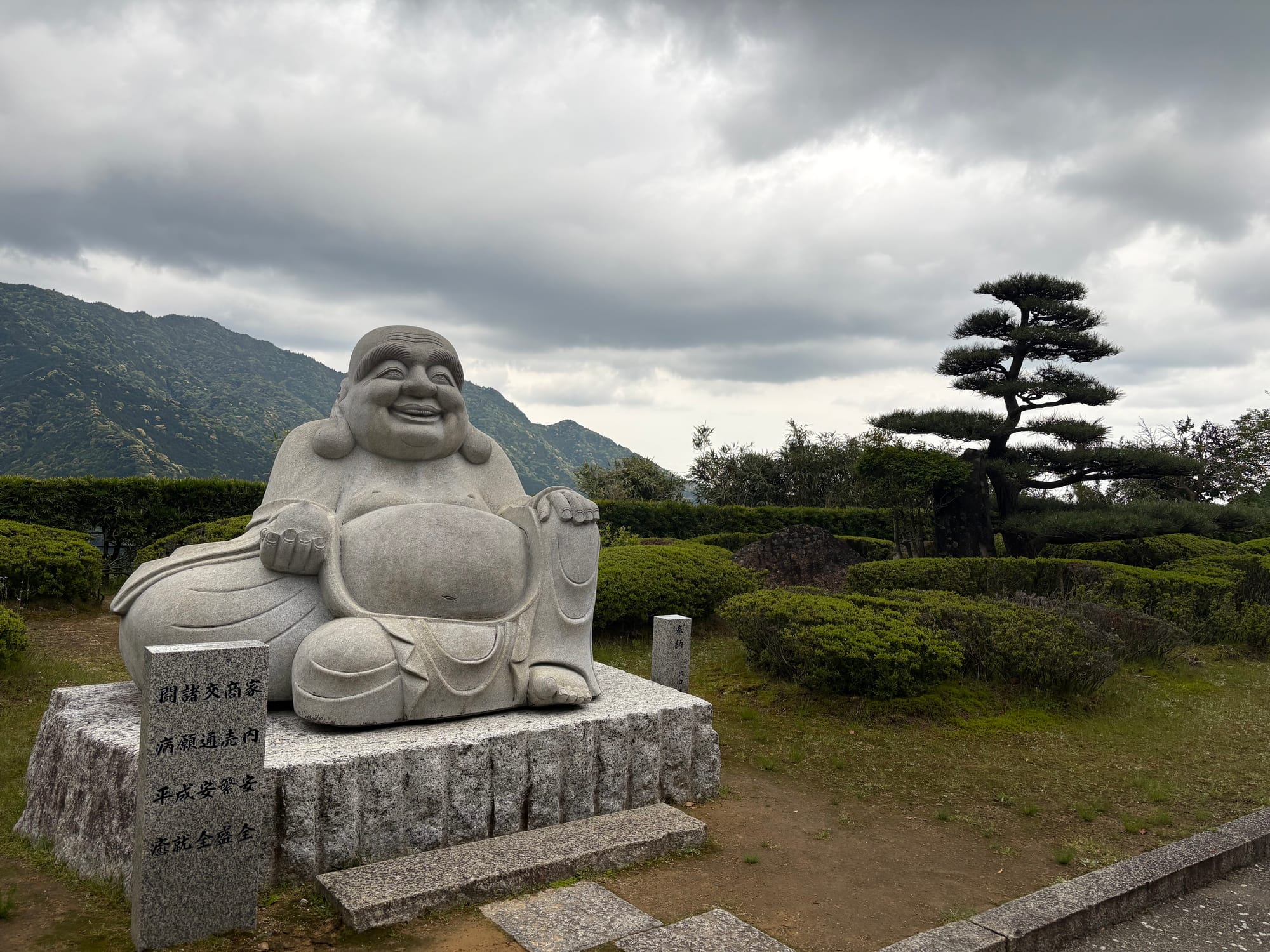

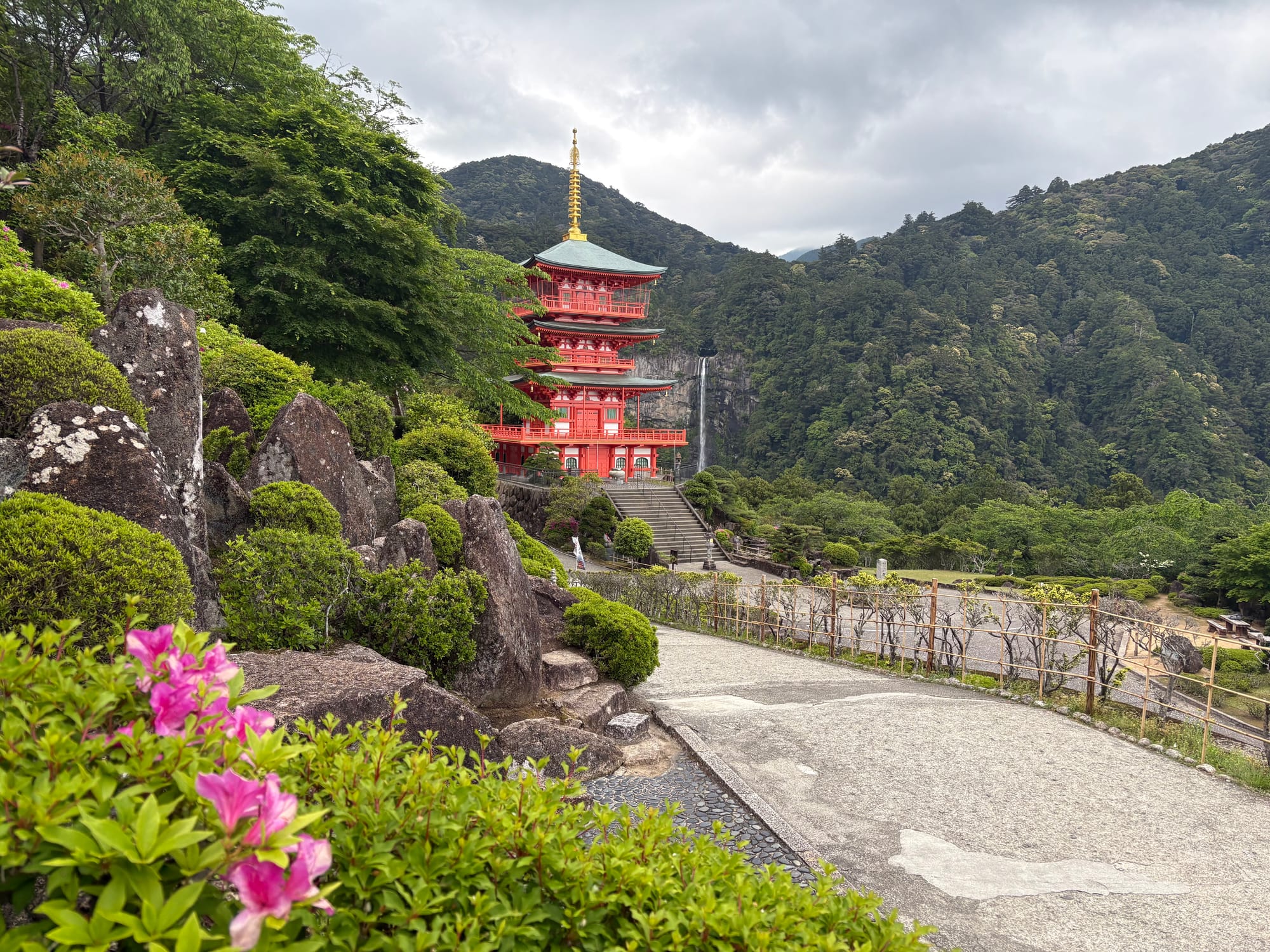
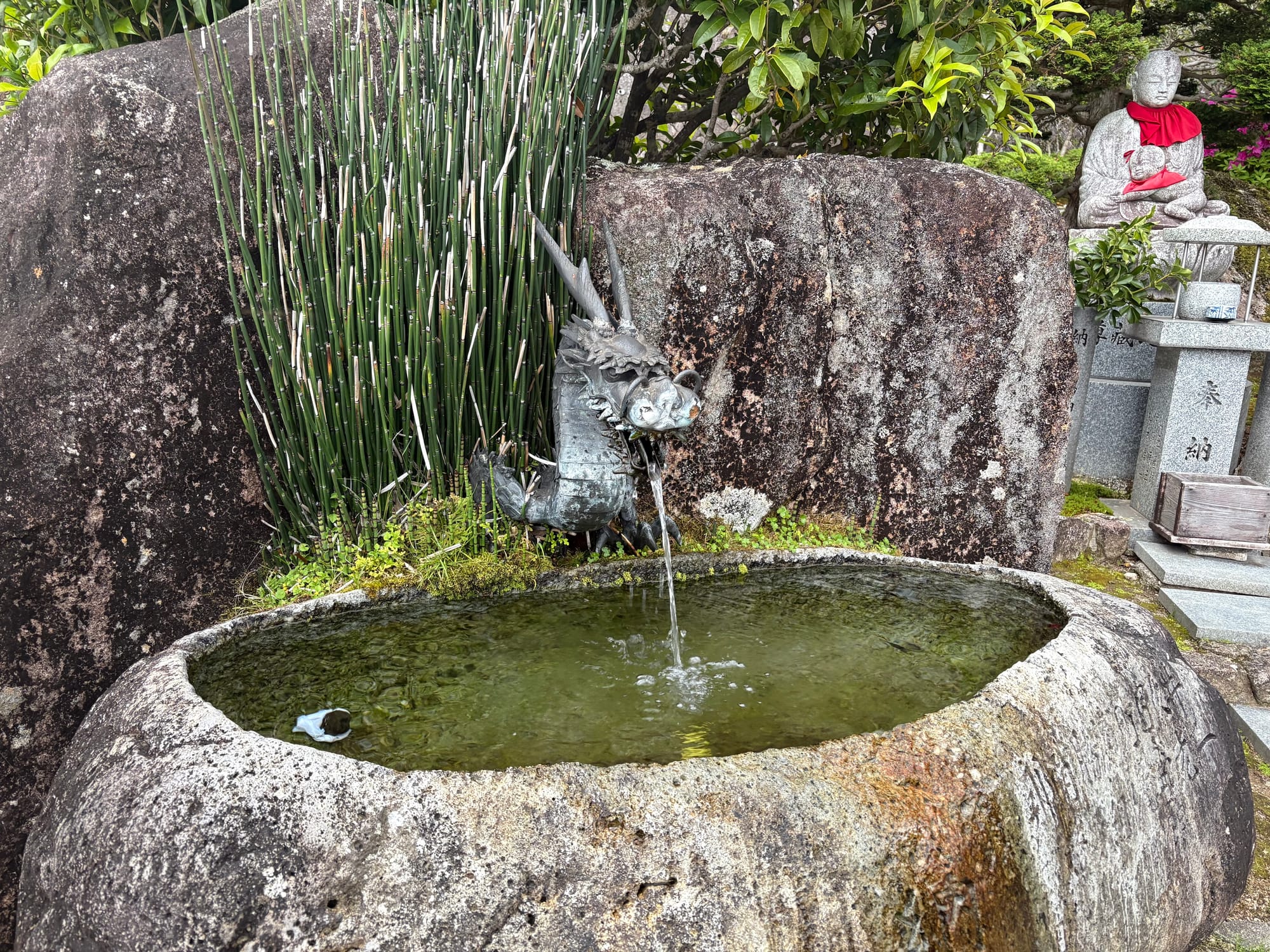
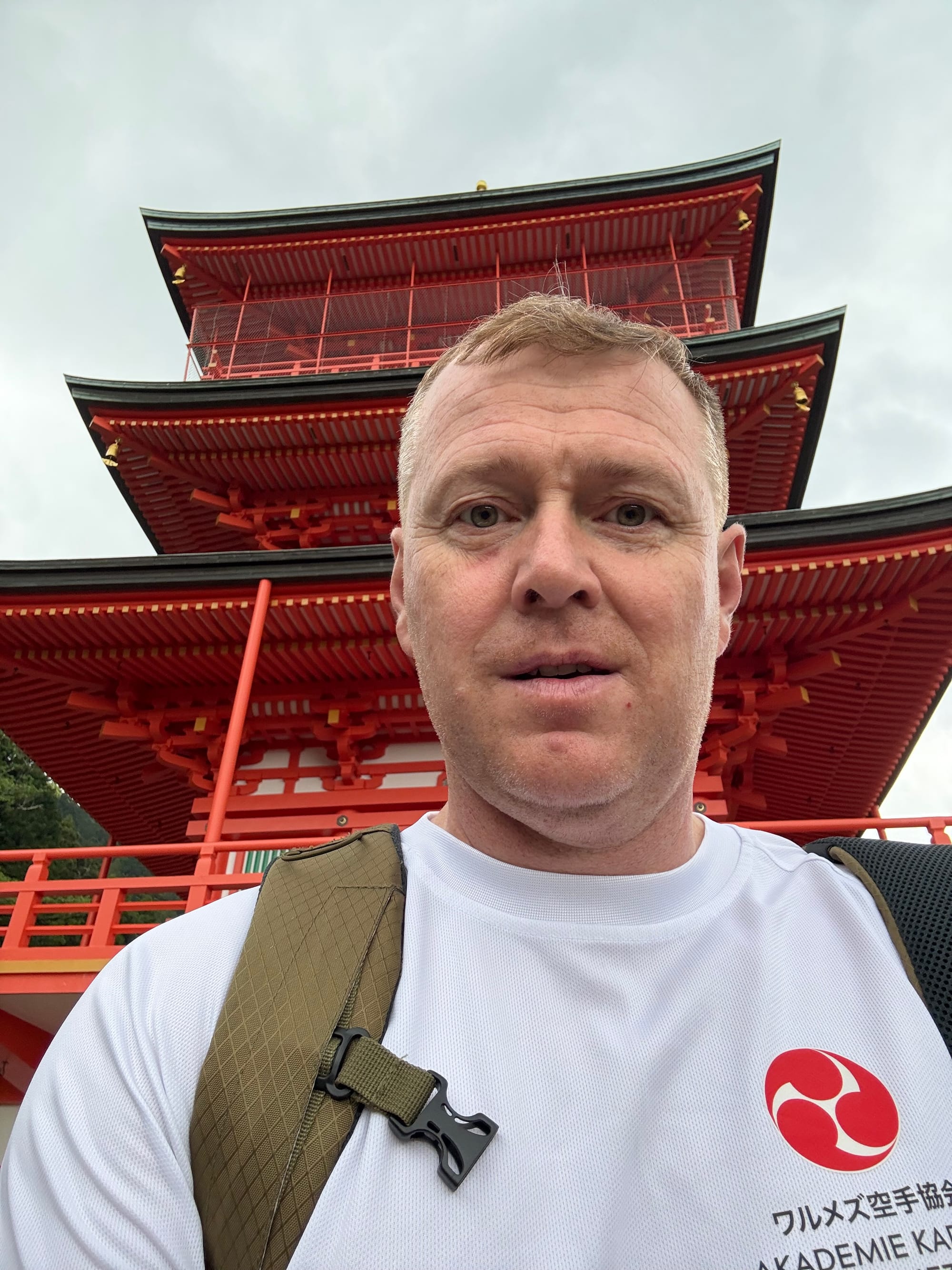
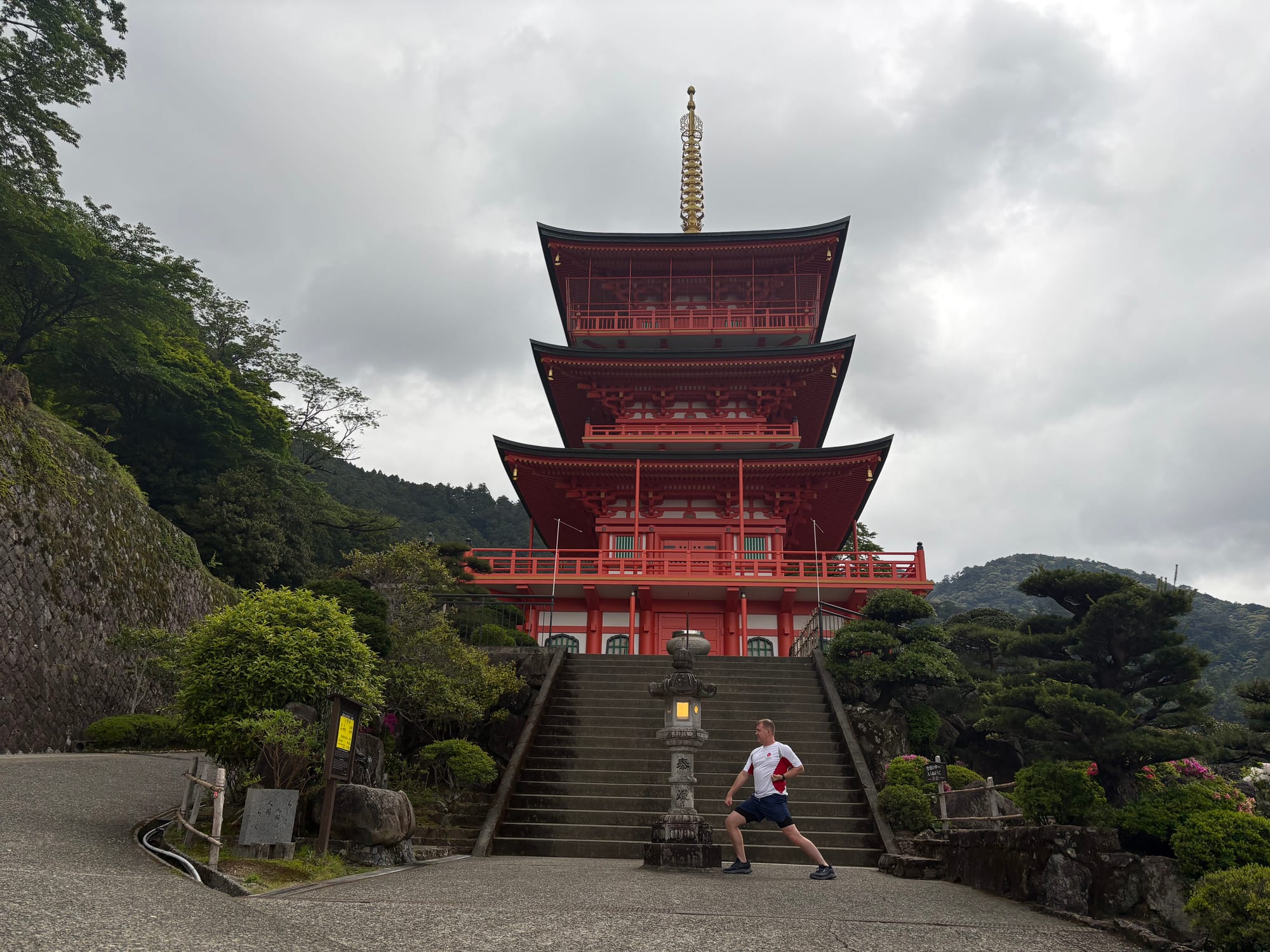
Deer roamed freely around the forest near the pagoda, reminding me of Nara. But these deer weren’t after tourist snacks—they just minded their own business. The waterfall was breathtaking—133 meters tall and 13 meters wide. You reach it by walking down a path of stone steps (nothing too difficult for most visitors). Next to the waterfall is a small torii gate and a spot where you can light incense. In ancient times, monks performed purification rituals here called misogi, standing beneath the waterfall to cleanse both body and spirit.
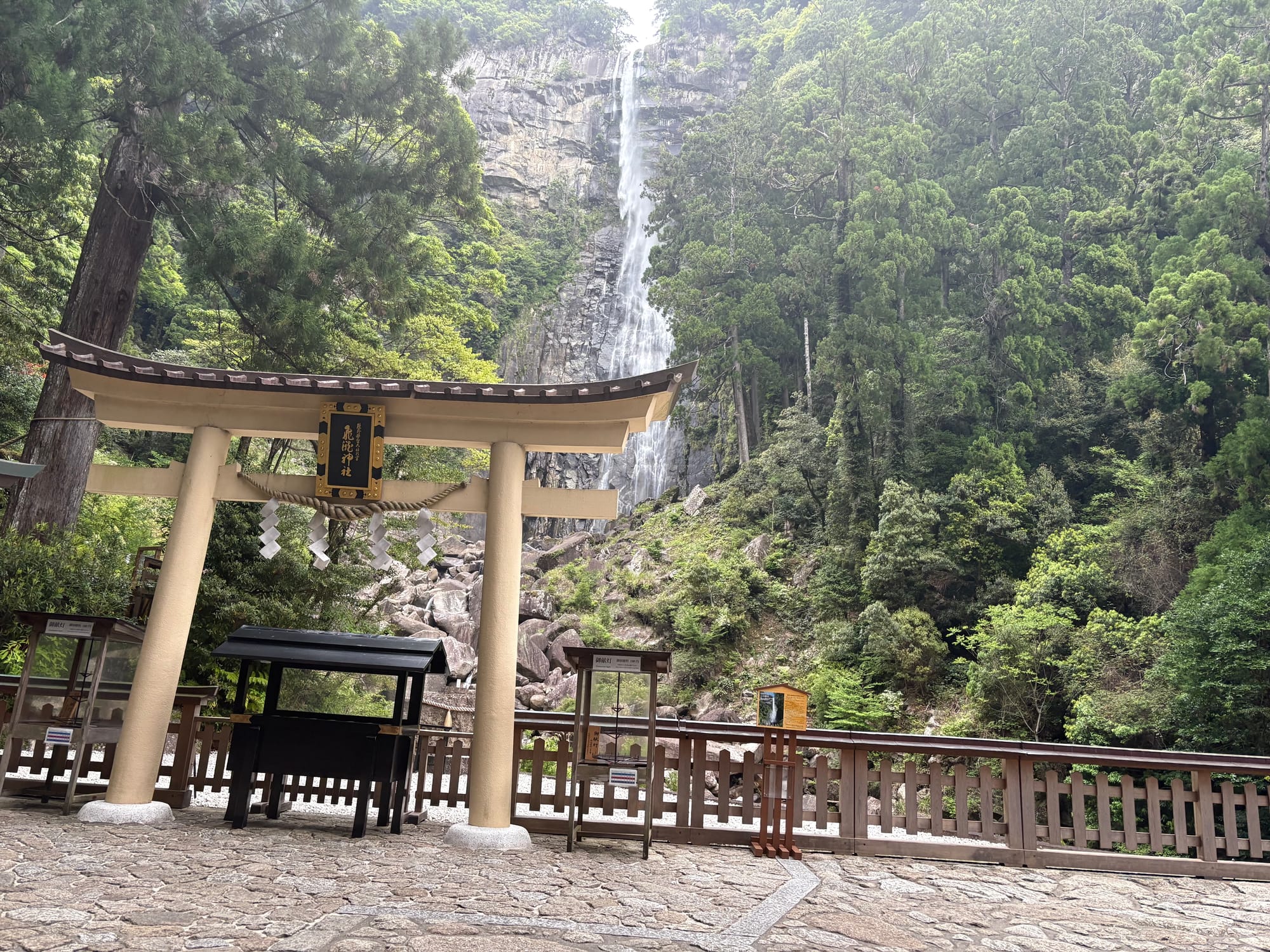

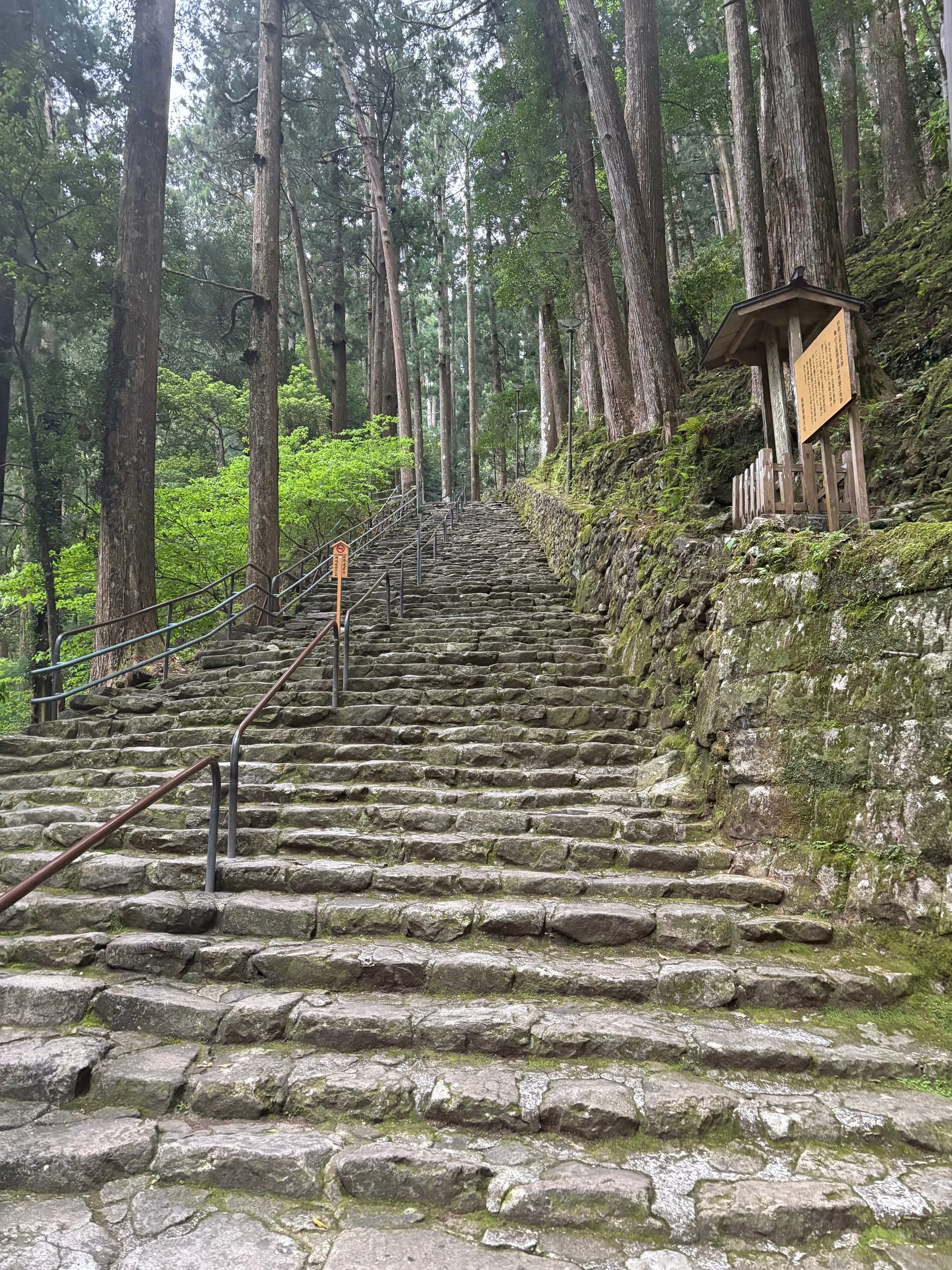
The tallest waterfall in Japan, Nachi no Taki, Nachisan.
Later, the last bus from Nachisan brought me back down to Nachi-Katsuura, where I stayed the night. With the forecast calling for heavy rain the next day, I decided not to continue the trail and instead use the rainy day to travel back to Osaka. But I had no idea what the next day would bring.
It started raining heavily overnight, and when I arrived at the small train station the next morning, it was packed with people. All trains had been canceled indefinitely due to severe storms and track issues. When I asked how to get back to Osaka, the staff simply said they didn’t know—maybe tomorrow. Some desperate tourists were trying to reach Kansai Airport for their flights and were in panic mode. Eventually, a few emergency buses were arranged to take them to the next major town.
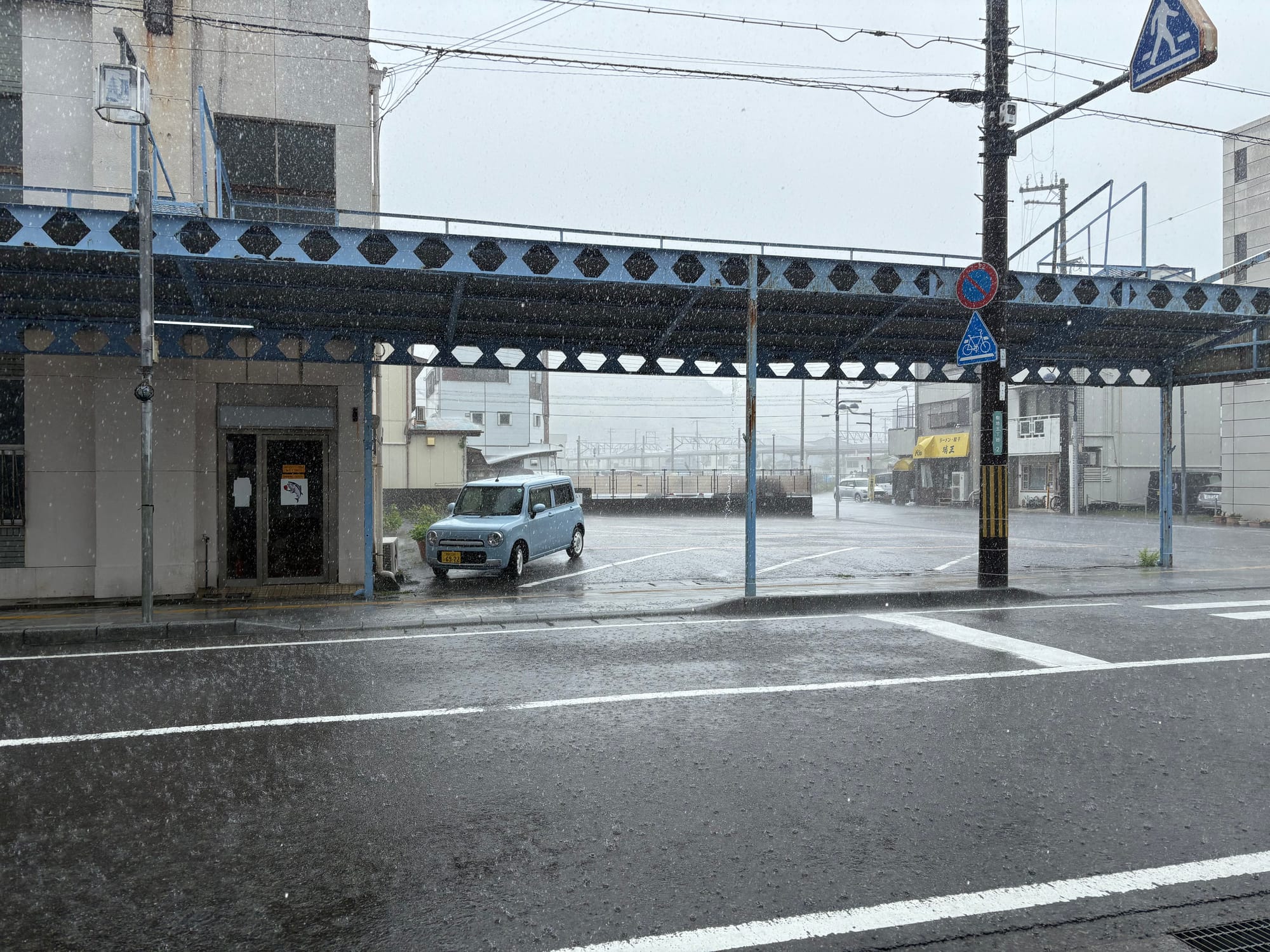

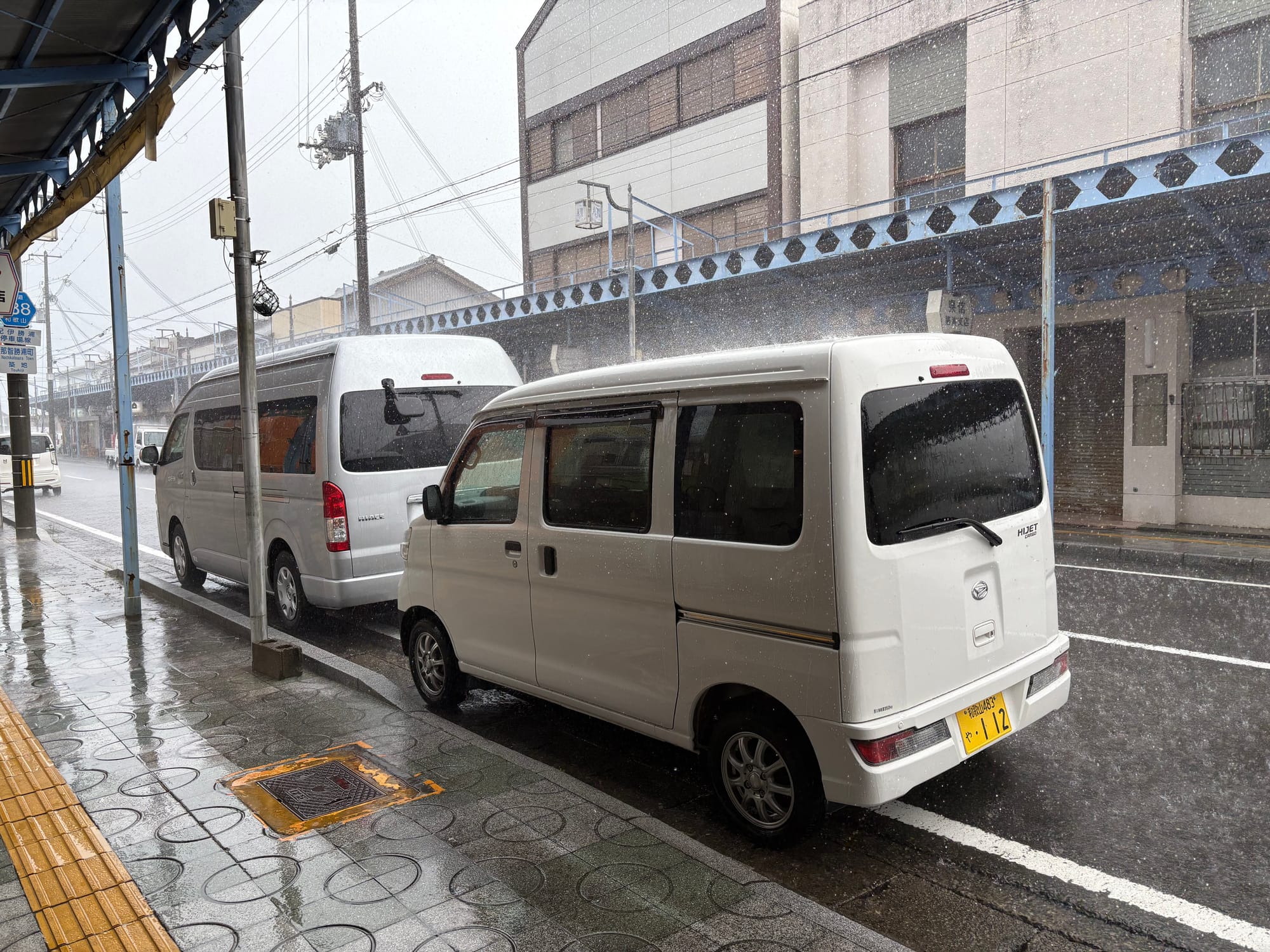
I decided to wait it out in a local izakaya, one of my favorite types of places in Japan. These cozy little eateries are often recognizable by their red paper lanterns outside. Many are run by elderly owners and their families. I often wonder whether they do it out of financial necessity or simply because, in line with the Japanese concept of ikigai, they want to stay active, feel useful, and connect with others. I believe it's more the latter.
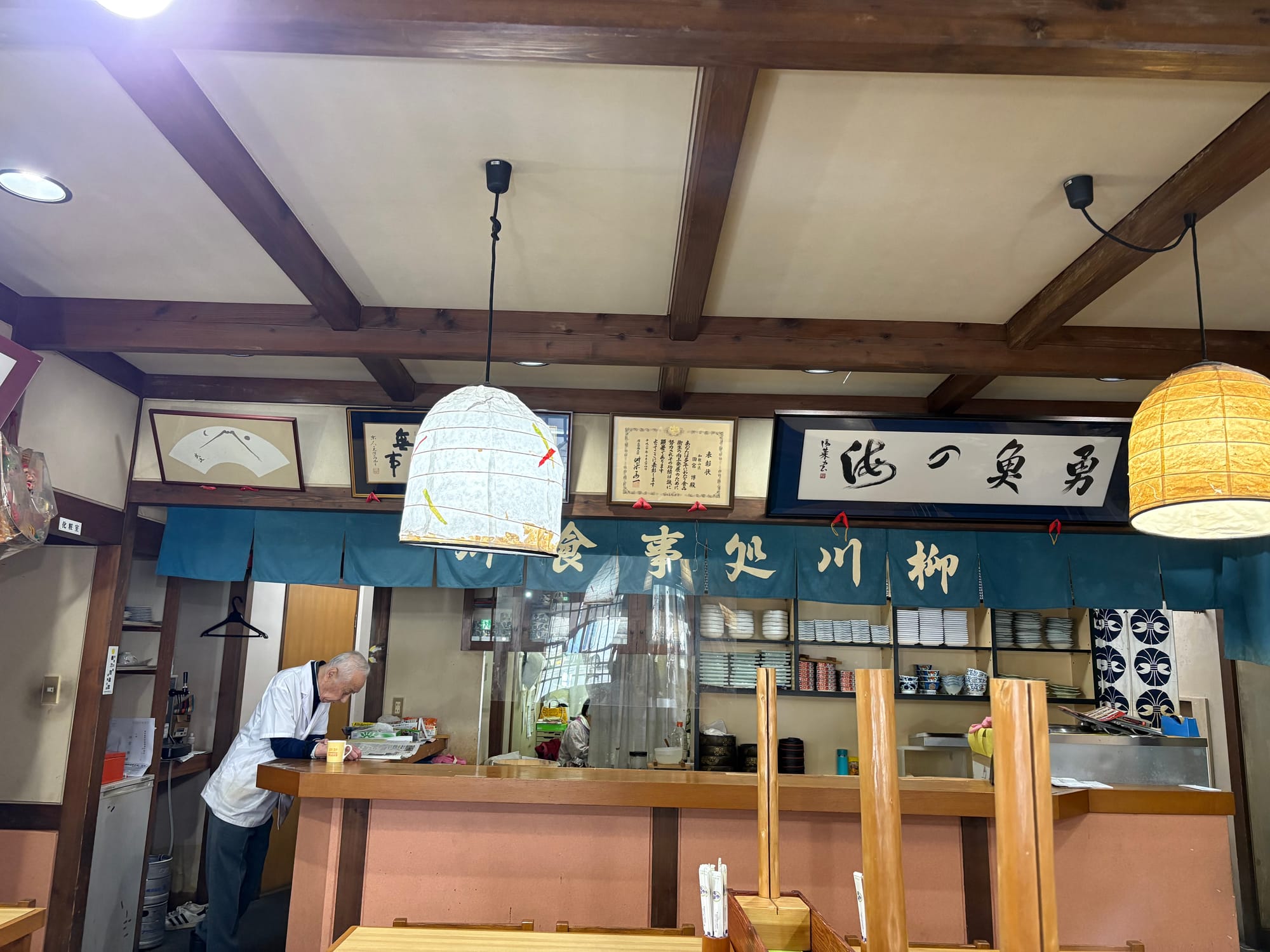
As the afternoon wore on, the storm clouds started to move away from town, though they still loomed along the train route I planned to take.

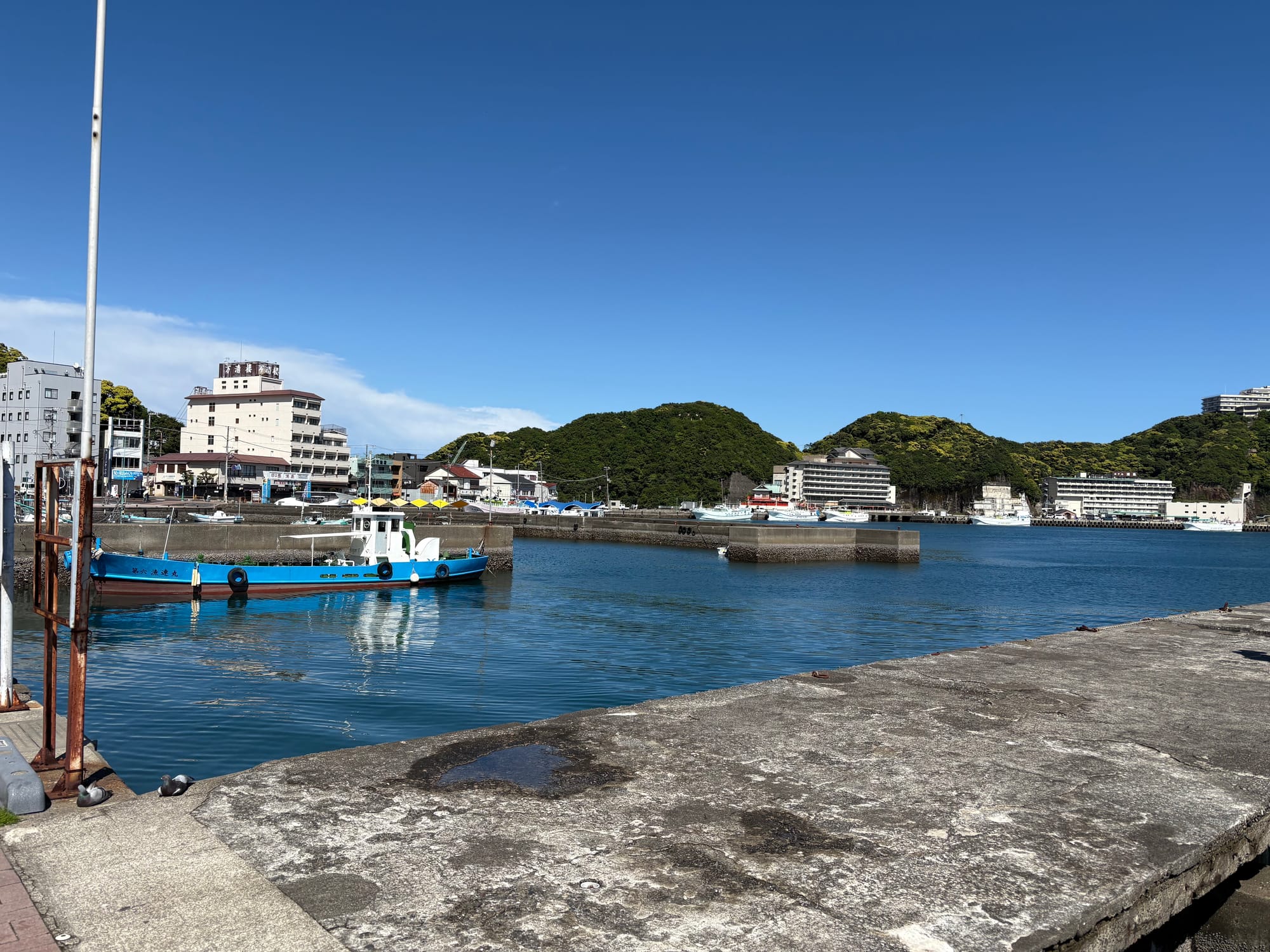
Nachikatsuura is beautiful, especially right after the rain. The weather changes very quickly.
But luck was on my side—eventually, the one and only train to Osaka departed. Just before midnight, I finally arrived in the city, ready to begin my karate and kendo training.
Kumano Kodo symbolizes rebirth, purification, and spiritual transformation. For the Japanese, it holds a similar significance to Santiago de Compostela in Europe—a journey of inner change. If you find yourself overwhelmed by a world obsessed with speed and technology, if you long to see things differently and reconnect with your essence, then Kumano Kodo is a path worth walking. It offers you, even for a fleeting moment, a sense of inner peace and life balance that you can carry back with you—and never forget.



